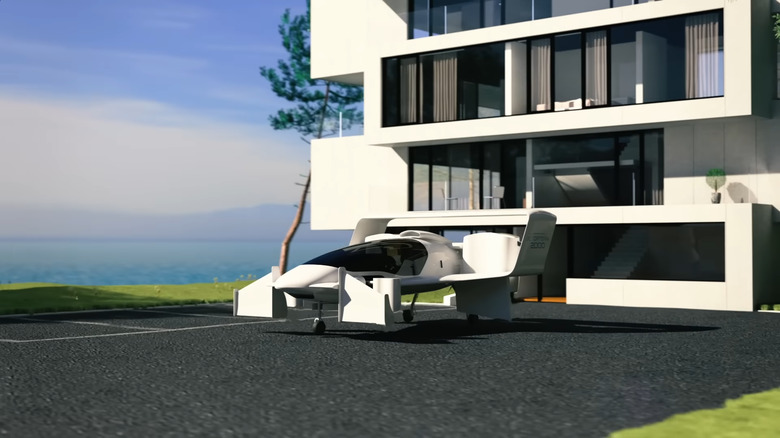Jetoptera's New VTOL Flying Car Is Designed To Nearly Reach Mach 1
What if your car could fly? That's the basic question behind Jetoptera's ongoing mission to create a fluidic propulsion system that makes aerial mobility more commonplace. Enter the company's newest project, the Jetoptera 2000, a VTOL flying car that can lift off and land vertically. But if a flying car wasn't intriguing enough, the Jetoptera 2000 is also designed to reach speeds of Mach 0.8.
Traffic is terrible. Chances are, you've had at least one incident where you've found yourself stuck in traffic on the way to visit friends and family, or even to travel to work each day. But what if that was a thing of the past? What if you could fly over all of it in a VTOL flying car? That would be a lot easier, wouldn't it?
Of course, which is why it isn't surprising that so many companies, including Jetoptera, are looking into ways to make flying cars that can propel passengers across cities quickly, and some have even come close to making flying cars a reality. But there's one problem that has plagued most of these projects: the sound of the propeller systems that they utilize to lift off.
Normally aircraft like helicopters rely on propellers to deliver this push, allowing the VTOL system to work as intended. But those propellers can be extremely noisy, which would make taking off in a VTOL flying car a bit of an affair if you did it from your suburban home.
That's where Jetoptera's VTOL flying car diverts from other options out there a bit. Instead of using propellers, it uses what the company calls a fluidic propulsion system, which is described as "a bladeless fan on steroids." So, instead of needing loud and heavy propellers to lift the vehicle up, it would just essentially create a powerful push of air that lifts the vehicle off the ground and into the air.
To pull this off, the company sends a small amount of compressed air through backward-facing slits on a thruster that is shaped like a ring. This creates negative pressure, which causes the front of the thrusters to suck in ambient air via what scientists call the "Coanda effect." Then the system releases the up to 15 times more air from the back of the thruster, allowing it to lift the VTOL flying car.
It's also this system that allows the vehicle to reach such amazing speeds. It's also the "most silent propulsion method in the skies" right now, according to Jetoptera. The downside here, though, is that Jetoptera isn't looking into electric-powered VTOL flying cars just yet. Instead, the current projects use gas-powered turbine generators. But that could very likely change once battery technology advances.
Even still, the fact that a company has managed to design a VTOL flying car that could reach up to Mach 0.8 is impressive. With so many companies working to create flying cars, every contender helps bring new ideas to the table.
